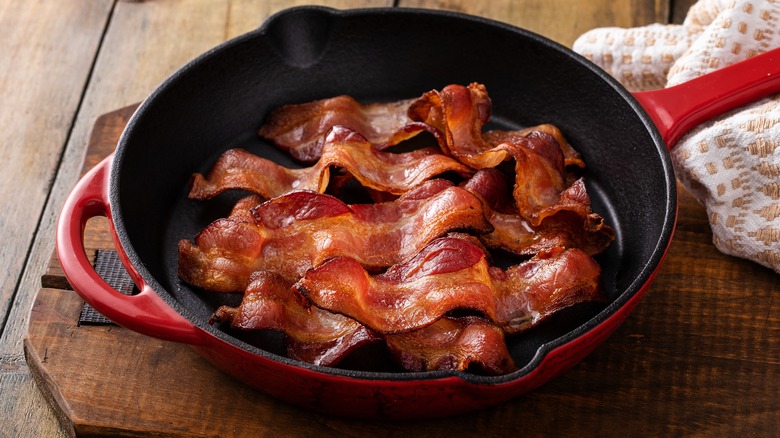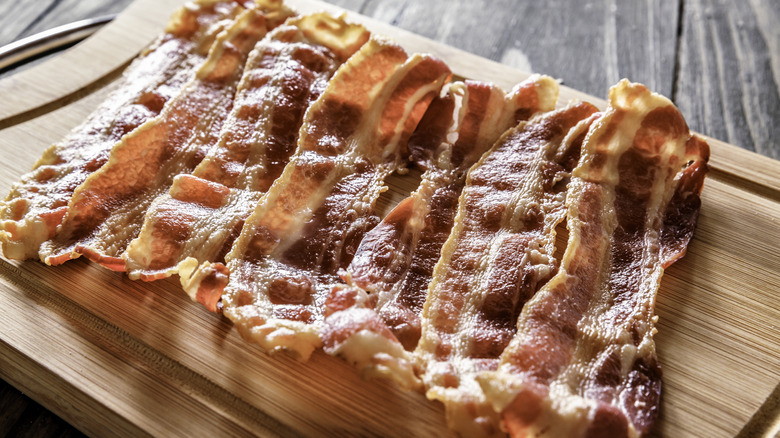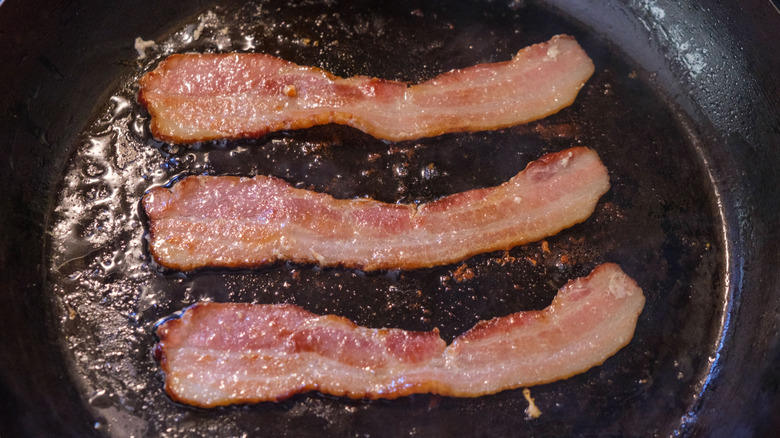Why It's A Mistake To Cook Cold Bacon Every Time
Crispy yet tender, perfectly cooked bacon is always immensely satisfying. Whether it's served with pancakes for brunch, in the best BLT sandwich for lunch, or alongside pasta for a creamy, comforting dinner, just the smell of sizzling bacon is enough to make you hungry, even before you taste the smoky, salty meat. However, improperly cooked bacon, whether underdone or burnt, can be a huge disappointment.
While there are many tips on how to cook bacon, the process of getting bacon right begins before you even start cooking. In fact, it starts the moment you take it out of the refrigerator. Taking cold bacon from the fridge and immediately placing it in a hot skillet might be tempting, especially when you're in a rush, but this is a common mistake. The key to evenly cooked bacon lies in a bit more time and patience.
Instead of cooking fridge-cold bacon, let it come to room temperature before you start cooking. The aim is to bring the fat and meat to the same temperature before the bacon hits the heat, ensuring they both cook evenly from the start. This step, which only requires a few extra minutes, can significantly enhance the results.
You want the meat and fat to cook evenly
Bacon is fairly rich in fat, which is one of the things that makes it so delicious. However, bacon fat retains cold longer than the meat. Therefore, when you cook bacon straight from the fridge, the meat cooks faster than the colder fat, resulting in an unevenly cooked slice. This can result in gummy fat when the meat is done, or overcooked meat while waiting for the fat to crisp up. Neither scenario offers an appetizing texture.
Allowing bacon to reach room temperature before cooking gives the fat a chance to warm up slightly before it hits the pan. Consequently, both the meat and the fat start cooking at the same time, and more evenly.
Bringing bacon to the ideal cooking temperature doesn't take long. Simply remove it from the fridge and let it sit on the counter for 15 minutes. Starting with a warmer temperature for the fat, once it's at room temperature, helps it render more quickly in the pan, enabling it to crisp up without burning.
Start with a cold pan to avoid burnt bacon
Just as it's important not to start cooking with cold meat, it's also a mistake to use a hot pan to cook bacon. While using a hot pan to crisp the fat quickly might seem logical, bacon's high fat content makes it very easy to burn. And when it comes to bacon, there's a big difference between crispy and overly charred.
After allowing the bacon to rest for 15 minutes out of the fridge to reach room temperature, try starting it in a cold pan over medium-low or medium heat. This approach allows the fat to render properly as the bacon cooks more slowly, reducing the risk of burning. Alternatively, try baking your bacon in the oven on a parchment-lined sheet tray. This method works particularly well for thicker cuts, as the lower temperature enables the fat to render slowly, ensuring an evenly cooked slice.
Regardless of your chosen cooking method, resist the urge to rush. While it's tempting to get your bacon fix as fast as possible, spending a few extra minutes both before and during cooking yields a more satisfying slice that's well worth the wait.



